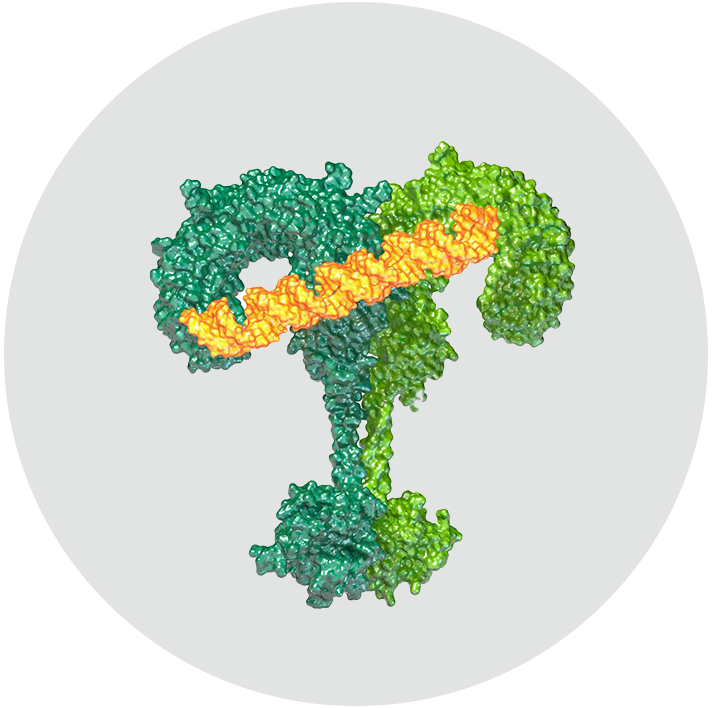The Role of Toll-Like Receptors
 Toll-like receptors
Toll-like receptors
Toll-like receptors (TLRs) are expressed on dendritic cells and other innate immune cells and are among the most important receptors for eliciting a response to the presence of invading pathogens. Humans have 10 types of TLRs that are similar in structure but recognize different parts of viruses or bacteria. By activating specific TLRs, it is possible to stimulate and control specific types of innate immune responses that can be harnessed to enhance adaptive responses and potentially improve vaccines.
Research at Dynavax has resulted in the identification of proprietary, synthetic oligonucleotides (short segments of DNA) that selectively and optimally activate these receptors. Our lead clinical candidates activate an important receptor called TLR9. In addition, Dynavax is developing therapeutic agents that activate two other important innate receptors, TLR7 and TLR8. We believe this portfolio of novel and potent activators may allow Dynavax to produce highly effective vaccines.
TLR9 Agonists
Central to the activity of our TLR9 agonists are dendritic cells. Upon engaging TLR9, dendritic cells provide two important functions for stimulating the immune system:
- They secrete interferon-α and other cytokines, which directly and indirectly lead to activation of other innate immune cells and promotes homing of immune cells; and
- They are stimulated to perform their critical function of teaching the cells of the adaptive part of the immune system to recognize unique protein signatures (antigens) associated with the tumor to focus their attack.
One possible advantage of using agonists to TLR9 is that TLR9 is only expressed in a few specialized immune cell types; allowing targeted activation of the immune system, and importantly, not causing a generalized and uncontrolled activation of the immune system.
